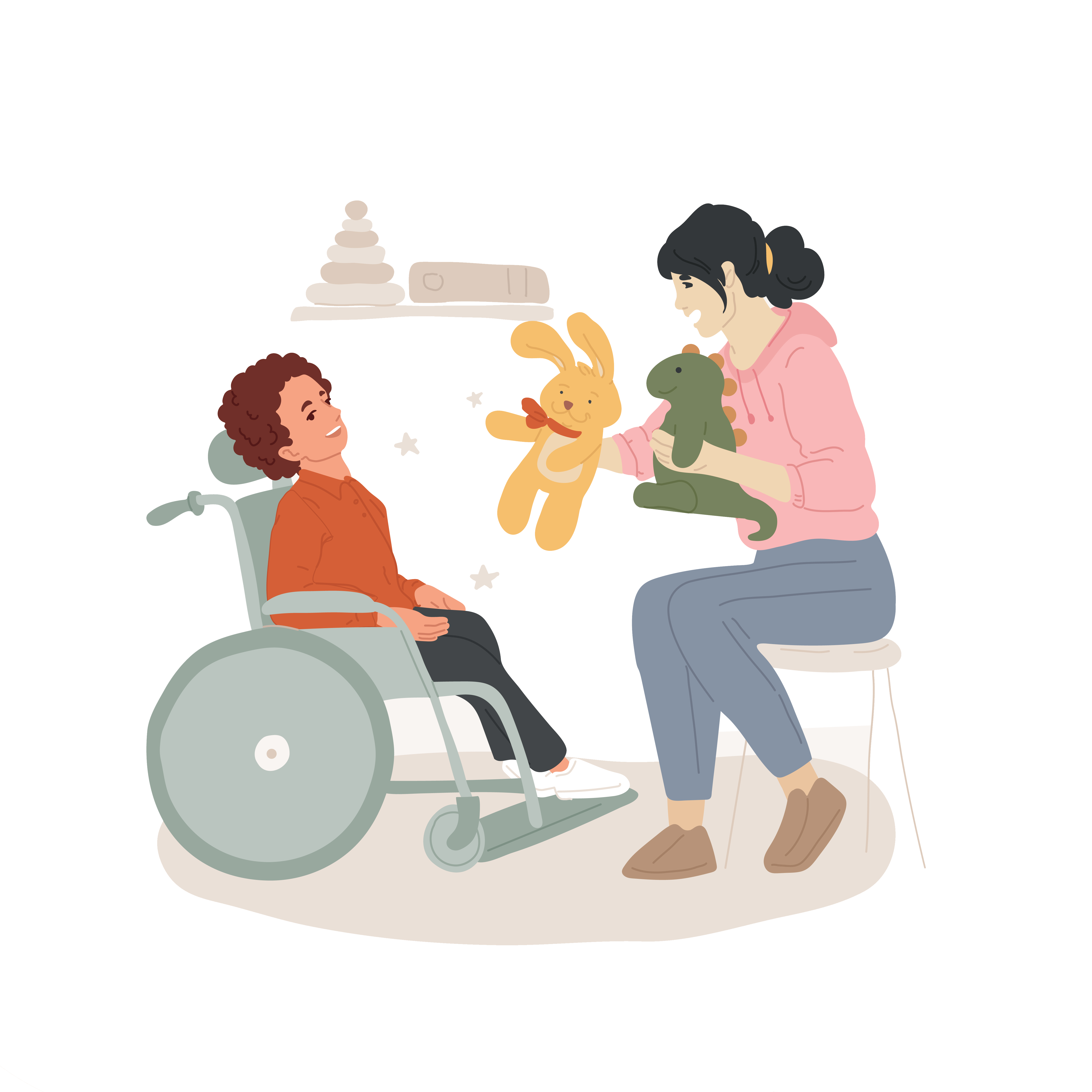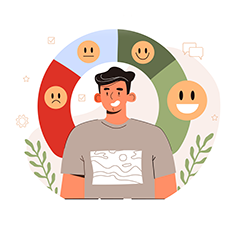Cerebral Palsy

What is Cerebral Palsy?
Cerebral palsy is a muscle tone, posture, movement, balance, and coordination disorder caused by an injury to the developing brain. It could be linked to epilepsy, abnormalities of speech, vision, intellect, behavior, and so on, in addition to motor concerns.
What Causes Cerebral Palsy?
The most widely accepted cause is getting an injury in the early phase of brain development or any malformation in the brain. The other reasons are:
- Brain infections
- Hypoxia
- Hemorrhage
- Kernicterus
- Jaundice or metabolic problem leading to brain damage in early years
- Genetic or hereditary
Signs of Cerebral Palsy
Cerebral Palsy can be identified from a very early age. Hence you can start the intervention right away.
In Infants:
- When the baby’s legs are tight and movement is rigid or when the limbs are too loose and show no strength, it may indicate the condition.
In Toddlers:
- The child is using only one part of the body. For example, using only one hand to reach for things.
- The child is walking on toes rather than full feet.
Other Symptoms Irrespective of Age:
- The child does not get proper sleep and cries excessively.
- Frequently jerking movements or getting seizures.
Book An Appointment
Types of Cerebral Palsy
Spastic diplegia : There is a tightness in the motion of limbs. Legs are more affected than arms. It is characterized by scissoring of lower limbs in babies that make it difficult to change diapers or drag the lower limbs while crawling.
Hemiplegic Cerebral Palsy : Hemiplegia refers to paralysis affecting one vertical portion of the body. The child will experience weakness on one side of the body. Since birth, the child prefers using one side more than the other side. It is observed mainly when the child begins walking with the weaker side dragging. The injury may have happened during birth.
Dystonia : Affected babies have poor head control, and have variable tone and rigidity. The intellect is preserved, but their speech is affected. Kernicterus (due to high bilirubin levels) or near-total intrapartum asphyxia are the causes.
Spastic Quadriplegia : It refers to the inability to use one’s entire body. It is the most severe form of cerebral palsy, characterized by severe impairment of all limbs. Symptoms include seizures, vision and hearing problems, swallowing problems, recurrent pneumonia, and drooling.
Diagnosis at Continua Kids
Continua Kids have the best developmental pediatrician and pediatric neurologist who will conduct the diagnosis to detect and treat any developmental delays or muscle function problems that could indicate Cerebral Palsy.
Although the diagnosis is mostly by history and clinical examination yet the diagnostic tests may be required like:
- MRI scan
- Hearing and vision test
- Electroencephalogram (EEG)
Treatment at Continua Kids
Cerebral Palsy may not have a cure but we help you manage the symptoms to improve the child’s capabilities. Therapists and strong support teams for specialized care are well equipped to handle such cases. Continua Kids provides 360-degree support for children with cerebral palsy and their parents. The treatment strategies are multidisciplinary which are decided only after thorough evaluation. Therapists and strong support teams for specialized and well-equipped to handle such cases.
- Therapies utilized are physiotherapy, occupational therapy, and speech therapy.
- Surgical interventions may be required to correct anatomical abnormalities or to release tight muscles.
- Consequently, we will use orthopedic devices like braces to support the child for mobilization.
- Medications can be used for controlling symptoms like seizures.
Therapy
CONTINUA Kids is unique in its own way as it provides all the scientifically proven, individualized therapies which are required for special children under one roof.
FAQ'S
When is a child prone to get cerebral palsy?
If the child is born prematurely, had a delayed first cry, or had a head injury or hemorrhage, then they have a risk of developing cerebral palsy later in life.
What are the other risks associated with cerebral palsy?
Visual impairment, hearing loss, gastroesophageal reflux, bowel and bladder control issues, sleep disorders, osteoporosis, hip dislocation, scoliosis, and behavioral issues are some of the conditions that can affect children with cerebral palsy.
When does cerebral palsy occur?
The symptoms may start showing at 5-6 months of age.
What is the life expectancy for children with cerebral palsy?
Children with mild cerebral palsy have a very high survival rate. It will reduce with increasing severity. With regular medications, therapies, and follow-ups with doctors, a child with cerebral palsy will be able to lead a fulfilling life.
Can Cerebral Palsy be inherited?
No. Cerebral Palsy does not cause any genetic mutation and has no chance to be passed down to further generations.





